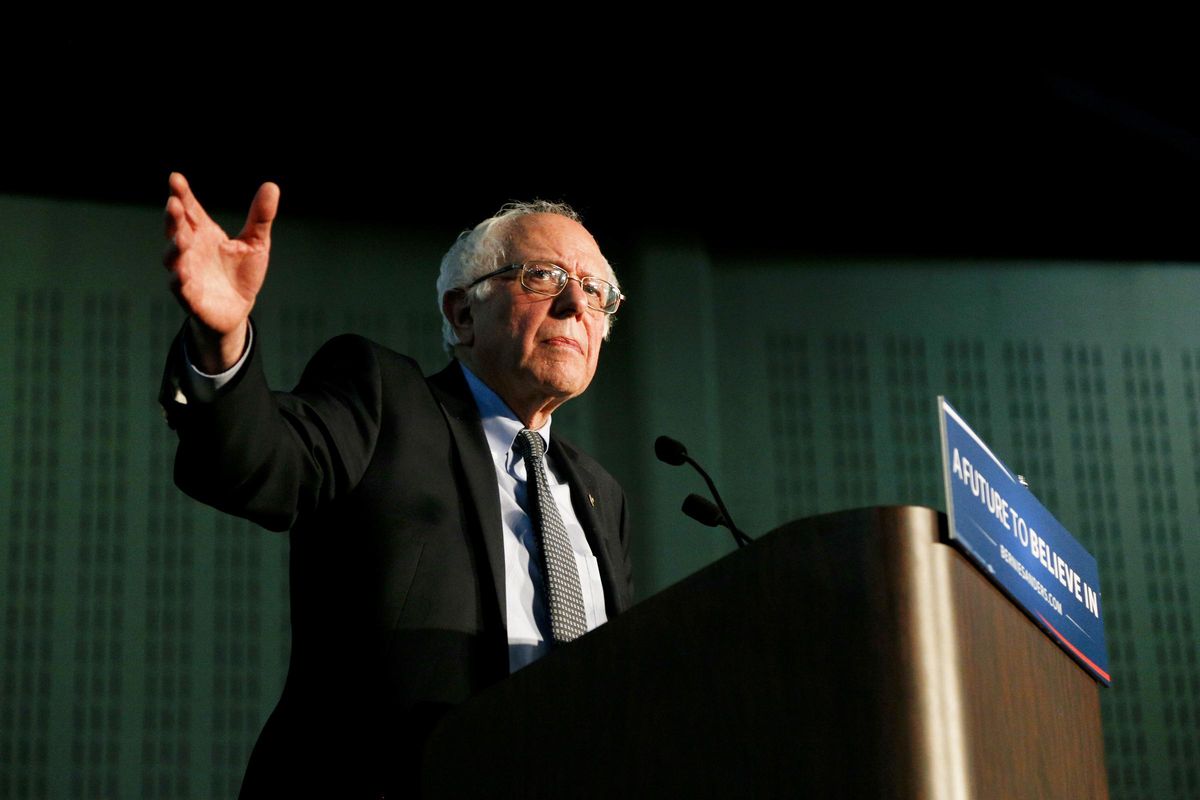In Chicago, Bernie Sanders found his place in civil rights movement

CHICAGO – Bernie Sanders was in his first year at the University of Chicago, 20 and with a thick New York accent, when he took to the steps of the administration building to rail against a university policy of racially segregated housing.
“We feel it is an intolerable situation, when Negro and white students of the university cannot live together in university-owned apartments,” Sanders told a crowd of about 200 students that afternoon in January 1962. Then he and a few dozen students headed to the fifth floor, where they began a 15-day sit-in outside the university president’s office, passing their time reading and eating dinners of donated cheese and salami sandwiches.
As Sanders and fellow Democratic presidential candidate Hillary Clinton jockey for support from black and Latino voters ahead of Saturday’s South Carolina primary, much of the debate has centered around which candidate has a stronger record of fighting for minorities. The issue could be especially important in South Carolina, where black voters form a majority of the Democratic electorate. In their last primary contest, in Nevada, a large majority of blacks supported Clinton amid questions about Sanders’ early commitment to civil rights.
As a U.S. senator from Vermont, which has a tiny black population, Sanders has faced skepticism from black voters about his longstanding involvement in race relations. Earlier in the primary he tangled with Black Lives Matters protesters, who complained at the time that his message of addressing economic inequality would not always serve as an antidote to systemic racism.
But it’s clear Sanders was at least a local civil rights leader, taking action on campus and in Chicago neighborhoods at a time when such activities were primarily happening in the South, according to an Associated Press review of contemporaneous news coverage and interviews with former classmates of Sanders.
They recall a student who was serious-minded about politics, if not his studies, and inclined toward long discussions of public policy. He once wrote more than 1,500 words critical of campus rules forbidding students from having sex that filled a full page of the school newspaper.
He became active in the campus chapter of the Congress of Racial Equality after arriving in Chicago in the fall of 1961 and before the academic year ended was voted the group’s chairman. In 1963, two weeks before Martin Luther King Jr.’s march on Washington, Sanders was arrested at a demonstration against segregation in Chicago schools.
“As far as whites go, he was in the top 1/1000th of 1 percent of people who acted, took it seriously and were willing to put themselves on the line,” said Mike Parker, a former classmate who was arrested with Sanders and about 150 other protesters that day. Parker was released; Sanders and three others – described by prosecutors as having “engineered” the protests – were later fined $25 each, according to a 1964 Chicago Tribune article.
“It was just the beginning of the civil rights movement, and there were very few whites willing to stand up and take a chance, not only to speak of politics but to get arrested for it,” added Parker, now 75 and an activist in California. “He was one of the few.”
Clinton took the stage in Chicago earlier this month with the mother of Sandra Bland, a black woman found dead in a Texas jail cell. Erica Garner, whose father, Eric Garner, died after police put him in a chokehold, is featured in a pro-Sanders campaign ad and stumped with him in South Carolina.
Sanders’ campaign has highlighted his civil rights activism in ads in South Carolina, just as Clinton’s campaign has highlighted her own record on the issue. Through Monday, at least one in five of Sanders’ television ads there featured a direct reference to his civil rights work or his stances on racial issues, according to data from Kantar Media’s Campaign Media Analysis Group.
One features Benjamin Jealous, a former NAACP president, comparing Sanders’ work with his own parents’ activism. Sanders is someone who “came up in the Congress of Racial Equality,” Jealous says. Another ad quotes Martin Luther King Jr. and says, “Bernie Sanders. He was there when Doctor King marched on Washington.”
Scrutiny of Sanders also has increased.
Civil rights icon John Lewis, backing Clinton, appeared to question Sanders’ role, saying recently, “I never saw him.” The Georgia congressman later clarified his comments, saying he didn’t intend to doubt Sanders’ participation.
Another flap involved a photograph from the University of Chicago archive used by the Sanders campaign. The photographer, Danny Lyon, said it showed a young Sanders speaking during the 1962 sit-in. But other former classmates said the lanky guy holding court in the hallway was actually another student. That prompted criticism from some who accused Sanders of exaggerating his involvement.
Even classmates who don’t believe Sanders was in the photo, however, said there’s no doubt he was helping lead the event and was a fixture on campus. Bruce Stark, who was treasurer of CORE and participated in the sit-in, said his most lasting impression of Sanders was how much older he seemed.
“He never smiled,” Stark said. “He was absolutely earnest and absolutely sincere – just the way he comes across on TV.”
Associated Press writer Chad Day and researcher Barbara Sambriski contributed to this report.